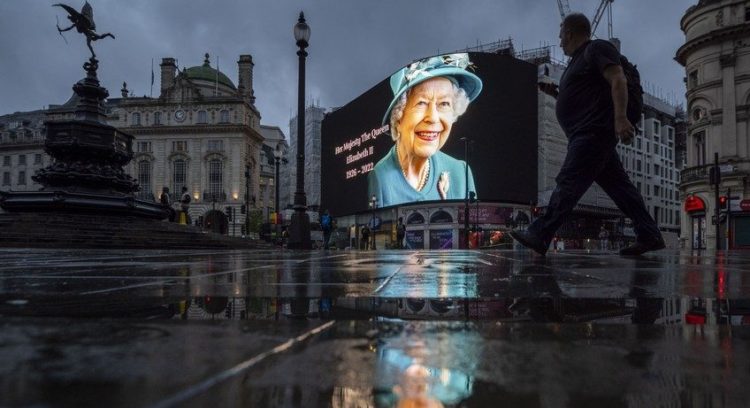Washington: The UK entered a period of weeklong mourning for Queen Elizabeth II, who died at 96, even as the US mourned the death of over 3,000 on this day in 2001 in the worst-ever terror attacks in American history.
Both the mighty democracies were in mourning on Sunday, as US President Joe Biden went to the British Embassy here to sign a long eloquent tribute to the passing of the Queen who had met no less than 13 of 14 US Presidents during her 70-year reign.
Later, on the 21st anniversary of the September 11 attacks, the President took part in a sombre wreath-laying ceremony at the Pentagon held under a steady rain and paying tribute to “extraordinary Americans” who gave their lives on one of the nation’s darkest days.
Sunday’s ceremony occurred a little more than a year after Biden ended the long and costly war in Afghanistan that the US and allies launched in response to the terror attacks
Britain has entered a mourning of Queen Elizabeth II that incorporates a pomp that few people alive have seen, given the length of her reign. Churches tolled their bells, and dozens of gun salutes were fired. The top English soccer league postponed its weekend matches, and most programming on television was about her. Her funeral, scheduled for September 19, will be a national day off.
Mark Landler, The New York Times’s London bureau chief, said there were these visible examples of mourning. “The Queen’s face is now on every single bus shelter in London. She’s peering down from Piccadilly Circus and countless other places. But Britons tend to be kind of stoic. You feel it more as this sorrowful undercurrent than as this visible, dramatic display of grief. And there’s not the demonstrative display of grief that you saw after the death of Diana in 1997.”
“This figure of familiarity for virtually everyone in this country is gone. You hear it in shops and in post offices and on the tube: Something the Brits took for granted is no longer there.” On the divide between people of different ages and their reaction to the death of the queen, he said that part of that divide is a function of time.
“Over the years, the monarchy has gained more notoriety for scandals than for the institution itself. If you’re a young person, you may be more inclined to think about Harry and Meghan than about the queen when you think of the royal family,” the New York Times quoted him as saying.
Noting that this kind of mourning process is unlike anything most have seen, even if it is fit for Britain’s longest-ruling monarch, Landler said that one highlight will be when the Queen’s casket returns to London. She will lie in state in Westminster Hall, where she’ll be viewed by probably hundreds of thousands of people. Then, a few days later, she’ll have a state funeral – the first since former Prime Minister Winston Churchill’s in 1965.
“Britain has been through a fairly turbulent period. There have been four Prime Ministers in six years and the storms of Brexit haven’t yet ebbed. The role of the monarch during this period has been important. As Britain cast itself off from Europe, it really needed to reclaim a sense of national identity. The Queen supplied that. The monarch is the stabilizing anchor underneath a rotating cast of Prime Ministers and the inevitable turmoil of a democratic system.
(IANS)



















